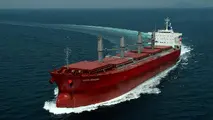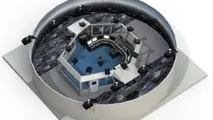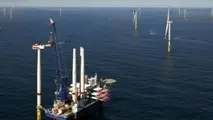Digitalization and Environment: Friends or Foes in the Maritime World

TIN news: Poul Woodall suggests setting industry’s environmental challenges as priority if shipping wants to move forward with its digitilization.
One can hardly open a maritime webpage or look in a trade magazine these days without finding articles about the importance of jumping on the digitalization wagon in the maritime industry if you as a company want to survive. More and more of the big players in shipping, team up with multinational IT players to develop digitalization products for the benefit of the industry.
It is therefore a natural question to ask, if this rush for digitalized products have taken over so much of the CEO’s attention that other issues, such as environment, no longer figures as major item on the company’s priority ladder – or is there in fact a happy marriage to be made between development of digitalized maritime products and the essential actions required to save the Planet?
Is digitalization and environment competing for the same resources with the formed currently well ahead ? Well in one area IT appears to have overtaken maritime environment. I read a study recently that IT is overtaking Maritime when it comes to emitting greenhouse gases. The energy required for server farms and other IT hardware should now exceed the 800 million or so CO2e that shipping is responsible for per year.
Being responsible for the environmental side of a shipping company, one sometimes watches with envy, the financial and human resources currently being spent in the pursuit of digitalization supremacy. Naturally, one could argue that complying with the Ballast Water Management Convention, the NOx Tier III rules, EEDI, MRV and not to forget the 0.50% Sulphur cap does certainly not come for free. On the contrary, the industry will have to invest multibillion of dollars and euros in the coming years just to comply with these and other regulation.
The big difference is that expenditure on digitalization is by and large voluntary whereas the environmental investments are legislative requirements – there is no escape.
I will argue that the reason the industry is now faced with these substantial environmental costs is largely the industry’s own fault. Far too long have we been sitting back and waiting for someone else to solve these issues so that we didn’t have to do it. One day the politicians and indeed the public had had enough and starting making rules for us. “If the industry can’t sort themselves out- we will do it for them”. The result unfortunately is that we have a set of rules that are expensive and misses the intended bullseye of the real problem by a fair margin. That is unfortunately, what happens when you let others take the decisions for you.
If we used it properly we can take digitalization and make the best out of the environmental obligations we are now facing. It requires that our digitalization colleagues allocate some of their resources to this part of the business in addition to whatever big data, track&trace, customer behavior prediction software and “ease of doing business” apps, the current time is spent on.
The environmental obligations will require significant monitoring and a lot more data just to comply. If we on top of this also what some date that can be put to sensible use, it will take a bit more. This cannot be coved by the master making his arrival time entry in to the logbook or the chief updating the oilrecord book with the latest bunkered volume. The level of date and not least its accuracy and frequency that is required already today, is of such magnitude that it is not doable without significant investments in IT solutions. Unfortunately, for many companies the financial business case cannot be proven and thus getting through the investment committee is an uphill task.
Proper, accurate and fast data flow is not only a prerequisite for monitoring your current performance it is also a necessary tool to access new technologies. You cannot evaluate the upside of a Flettner rotor or a biodiesel product if your consumption figures are based on a manual tank sounding using the traditional sounding tape being performed while on the high seas using the original sounding tables. We have to look ahead and not only automate the processes, but use technology to obtain more accurate data.
So the big question is how to convince the digitalization masters that environment deserves a portion of their attention. After all if we do not overcome the environmental challenge there will be no maritime industry left to digitalize in the future.


